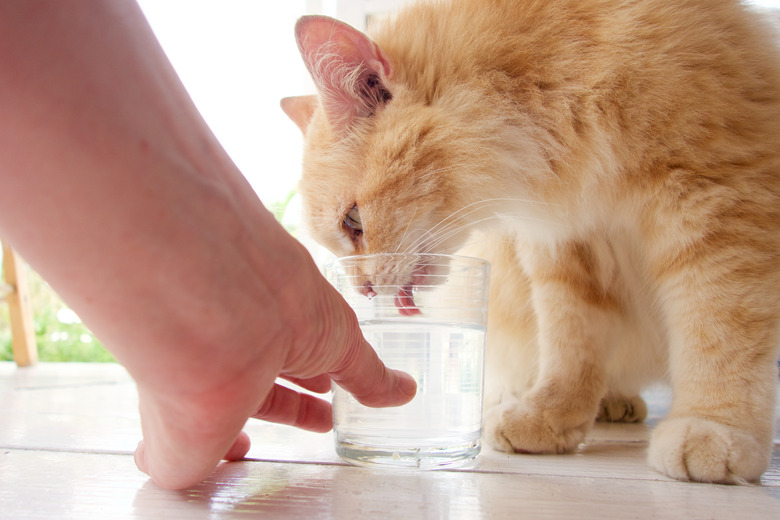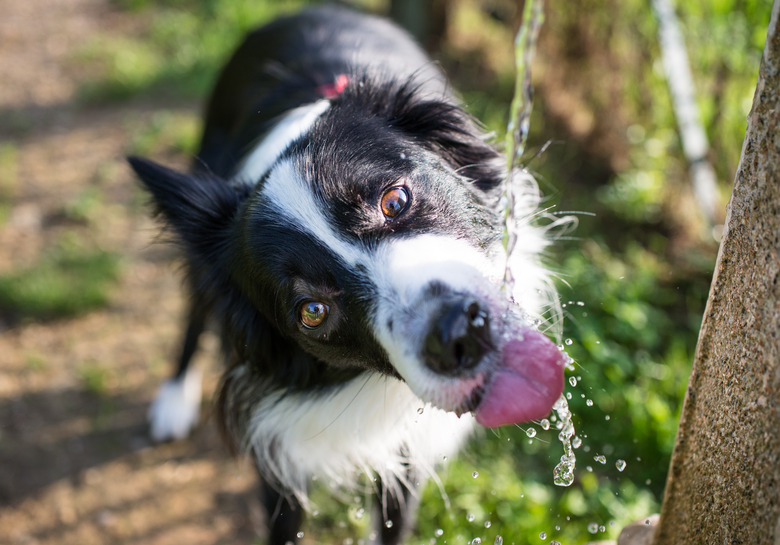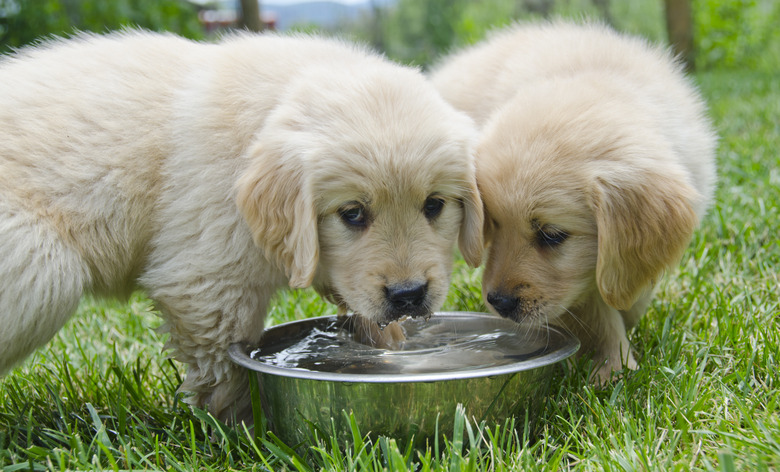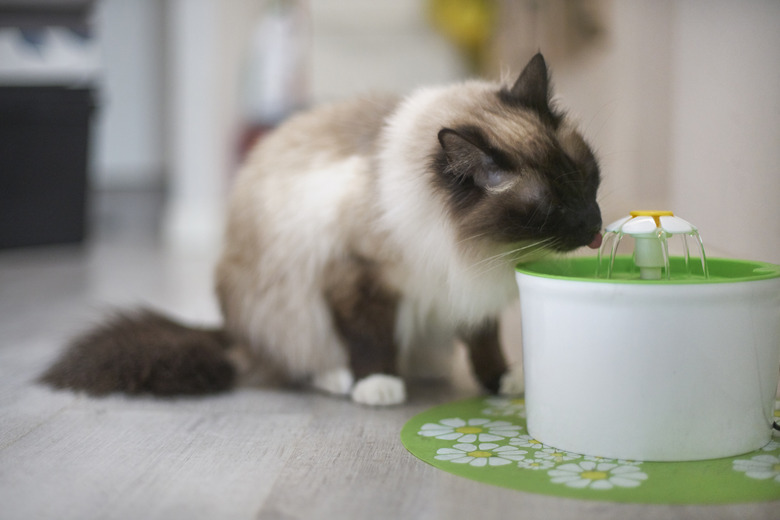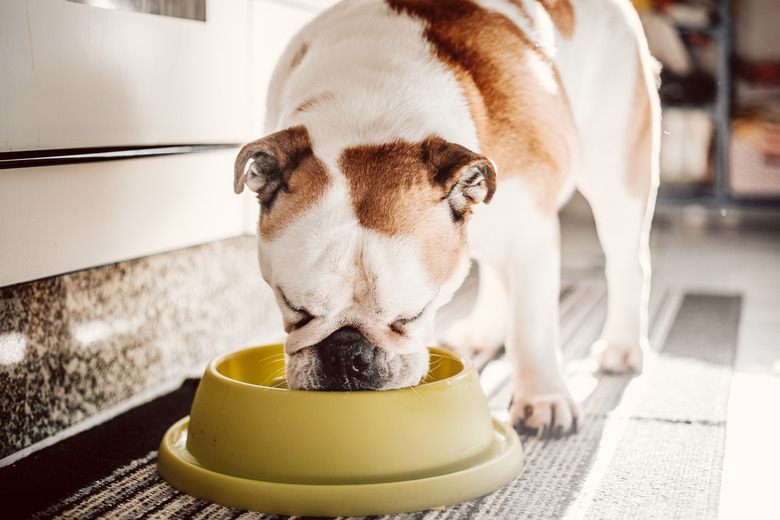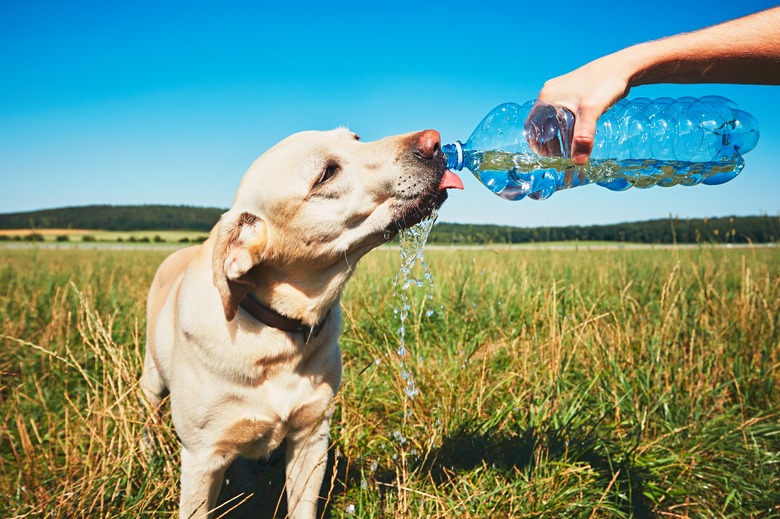How Much Water Do Cats & Dogs Need To Drink Every Day?
Most pet parents try to be conscious of their cat or dog's water intake. But how much water, exactly, do dogs and cats need to take in every day?
Dogs and cats need different amounts of water based on their body weight, activity, and daily food intake. You can follow some rough guidelines to make sure your pet gets enough fresh water every day, but it's also important to look at how your cat and dog drink water in addition to the amount.
Why is water important?
Why is water important?
Water is important for animals for two reasons: hydration and body temperature control. If your pet dehydrates from a lack of fresh water, it can impair cell function. If your dog is playing in the hot sun, it can overheat. Lack of hydration can cause dizziness, muscle cramps, disorientation, nausea, and other health problems.
Dehydration can also dry out skin and fur, further harming your pet. Proper hydration includes serving water at the right temperature. Iced water might take longer to leave the stomach and get to the muscles, so you can consider serving your pet chilled water.
Some medical issues like kidney disease or Cushing's disease can be caused or made worse by a lack of fresh, clean water.
How much water should dogs drink?
How much water should dogs drink?
Adult dogs should get about one ounce of clean water per day for every pound of body weight. To do the math, a 20-pound dog will need 20 ounces of fresh water, which is the equivalent of 2.5 cups. One cup of water is 8 ounces. You'll also need to take into consideration your dog's exertion levels throughout the day. For example, if your healthy dog is running and playing in the hot sun, it's going to pant and lose more water and nutrients lost in the process.
If your dog is laying around the house, sleeping, or otherwise being mostly inactive during the winter months, your dog will need less water and need to replenish fewer nutrients than if it were panting intensely. A dog drinking bowl that holds a certain amount can help you determine if your dog's water intake is sufficient.
How much water should cats drink?
How much water should cats drink?
Cats should get 3.5 to 4.5 ounces of water per day for every five pounds of body weight. As with dogs, you will need to consider a cat's activity level, how hot it is, your home's air conditioning or heating situation, and whether you serve your pet dry or wet cat food. In addition to skin and fur problems, lack of water consumption can magnify existing health problems in cats, such as diarrhea, kidney problems, diabetes, and hyperthyroidism.
Dry vs wet food
Dry vs wet food
If you're serving wet or dry pet food, that will impact how much water your cat or dog needs. A dog or cat who eats a wet cat or dog food receives some hydration benefits from that as well. Dry food has almost no water content.
If you want to make dry food more hydrating for your dog, you can pour some fresh water or low-sodium beef or chicken broth over dry food. In addition to making some dry food more enticing for animals, adding water in the form of broth will help keep your pets adequately hydrated.
Do bowls matter?
Do bowls matter?
Serving your pet water in a plastic water bowl can lead to health problems. If the bowl becomes scratched and the outer seal is broken, bacteria can form in these areas. Some pet experts believe that plastic drinking bowls leech BPA, lead, or other harmful chemicals into the water over time. A nonporous stainless steel water bowl eliminates these problems.
You might also want to look into water bowls with fountains. Cats are feral animals and drinking water that's been standing for several hours is not as inviting as water that comes from a gently gurgling source. In addition to keeping water circulating, a fountain bowl makes a soft sound that attracts cats and can lead to their drinking more often.
Whether you buy a water or food bowl made of plastic, stainless steel, ceramic, silicone, or other material, check for any certifications or warnings on labels. Inspect bowls frequently for cracks or chips that can allow bacteria growth. Use a water bowl that keeps more water than your pet needs each day in it. This will make sure your pet has enough water if there's a spillage, and will make the water source more attractive than if the pet has to lick the surface of the bowl to get the last few drops of water.
Learn the symptoms of dehydration
Learn the symptoms of dehydration
A dehydrated dog will exhibit symptoms such as loss of skin elasticity, loss of appetite, vomiting with or without diarrhea, lethargy, panting, dry nose, or sticky gums. A dehydrated cat will have similar symptoms including less urination and an elevated heart rate. Cats don't usually pant, but if they are dehydrated they might.
The bottom line
The bottom line
While water needs will vary by age, size, and other environmental factors, adult dogs should drink about one ounce of water per day for every pound of body weight. Cats should drink 3.5 to 4.5 ounces of water per day for every five pounds of body weight. If you feel your pet needs more hydration, consider adding water or broth to their food, or consider making them a hydrating treat. If you suspect your pet is suffering from dehydration, call your vet right away.
